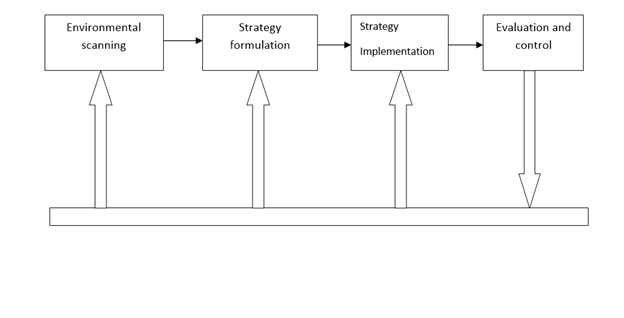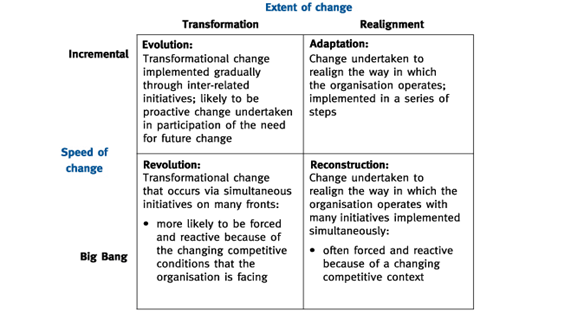Management of Strategic Change
In business Environment, company has to undergo different kind of changes. These changes occur due to internal issues of company or advancement of technology. Change denotes to cope development of touching from an unacceptable present state to a preferred state (Beckhard and Dyer, 1983). Currently, organizations obtain benefit from strategic change, so they must adjust themselves with new condition if they want have profits. The challenge for managers in current business climate is learning to manage change successfully. To stay competitive in the long term, enterprises are required to assume compound changes with increasing speed, effectiveness and success (Arnaboldi and Azzone, 2005). Strategic change is described as "changes in the content of a firm's strategy as defined by its scope, resource deployments, competitive advantages, and synergy" (Hofer and Schendel 1978). Managers who are responsible for strategic change must consider some issues. First of all, they have to consider the culture and behaviours of workforce. It is understandable that changing something that people used to it for a long time is not easy to change. Another factor is that when talking about a strategic change there must be good consideration about context compatibility between the change and organization. Lynch (2008) argues that in order "to manage strategic change, it is important to understand what is driving the process".
There are four steps in managing strategic change:

Types of strategic change: Change can be categorized by the extent of the change required, and the speed with which the change is to be achieved. Characteristically, strategic development is incremental. It builds on prior strategy, it is adaptive in the way it occurs, with only occasional more transformational changes. Balogun and Hailey recognized four types of strategic change

Barriers of strategic change: Theorists have realized numerous challenges and barriers in strategic change such as culture and management, technology, strong competition, environment, structure, labor and employees and political issues .The chief obstacle in organization versus strategic change is culture. In the organization, people come from diverse cultural background and they have different outlook. Culture has a strong effect on organization's strategy and also decision making between managers. Culture refers to attitude of employees and top managers in the organization that shows how they behave and carry out the business. Culture can completely destroy everything in the firms. It is observed that the indulgence of the employees, their response and reaction to the new change is always had been the main trouble that the firms has to face.
New technology and product development required for strategic changing that is very expensive for an organization therefore it creates hurdle in growth of organization. Strong competitors also create problems in strategic change management. The company should have a strategic plan for competing among it its competitors. Environment is another factor that plays a challenging role in organizations. It can be said that uncertain strategic direction, insufficient concept of business environment, not to share the knowledge and problem among each other, poor vision and mission and goal setting, high speed of external change are factors that create environment hurdle. Structure of organization is also a major challenge that limited performance, inadequate creativity and imaginative power, different moral patterns and competitions are the most dominant elements in the structure.
To summarize, Strategic change management is the method of managing change in an organised, thoughtful way to accomplish organizational goals, objectives, and missions. Change is essential for organizations for success and stay competition in fierce business environment.

